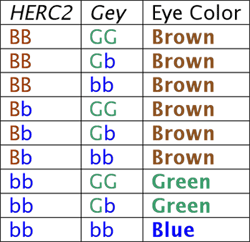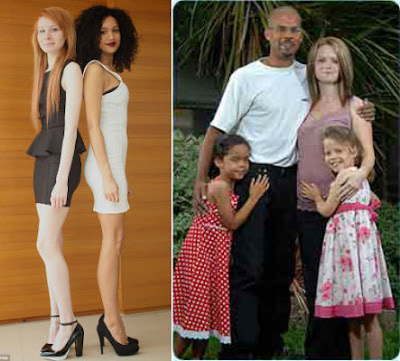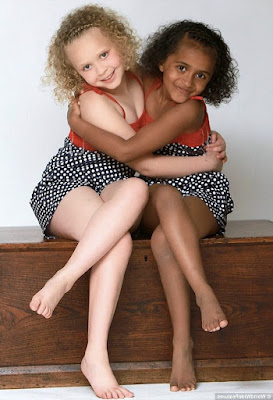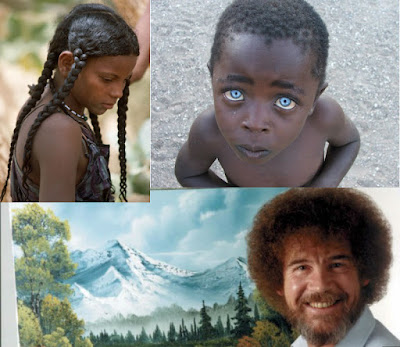Biology concepts – twins, genetic linkage, racial phenotypes, skin pigmentation, single nucleotide polymorphism, random assortment, discordant race twins
A great story came out this past July about a twin Earth. Well, almost. In looking for exoplanets, the holy grail is a planet that looks a lot like Earth. It should have the possibility of liquid water, it should be about the same size so that the gravity would be similar, and it should be rocky, so people would have a place to stand.
Kepler Space Telescope team found our closest twin yet, and she’s only 1400 light years away (8.23 x 1015 miles). Kepler-452b is 1.6 times as large as Earth when most of the exoplanets are 6-20 times the size of Earth. It has about twice the gravity - still in a decent range, but will drive every teenage girl nuts. She’s going to weigh twice as much!
The planet is right on the edge of the habitable zone where liquid water would be possible, and she is about 6 billion years old (Earth is 4.55 billion years old). Kepler-452b has an orbit time of 384 days. Everybody will be just a bit younger, so now we have the women back on board. The star it orbits is of the same type as our Sun (G2) and gives off about 10% more energy – tanning will be easy. That’s about the best you’re going to do when looking for a twin planet. Astronomers aren’t sure, but they suspect that it has a rocky core and surface, so building shopping malls will be easy – thank goodness.
This is the best possibility science has found yet for a planet that might harbor life that looks like us. It’s age means that it's had time to evolve life to a significant stage. And it could be a second home to us if we keep destroying our world and we learn how to travel that far. On the other hand, it could be a gas planet and have a toxic atmosphere so that nothing like us could live there. Could there be twin species out there staring at us through a big telescope?
This got me to thinking – how do you define twins? Monozygotic is easy, they’re conceived at one time from one egg and one male gamete. But what about dizygotic twins? They’re no more closely related as any two siblings, so what makes them twins? Is it because they were conceived in one attempt? Is it because they have the same mother and father? Is it because they are born at the same time?
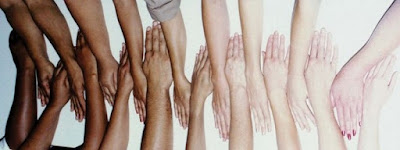 |
There are 600 proteins used to make and distribute melanin in skin, hair and eyes. There are at least 50 genes that control skin pigmentation to some degree. Each has many different versions (alleles). A new forensics test can predict accurately how dark a person’s skin is just by testing any DNA from the individual. |
If one child is fair skinned, blue eyed, and straight haired and another is brown skinned, brown eyed and woolly haired, can they possibly be twins? The answer may surprise you.
Some of the heritable systems that control obvious “racial” phenotypes like skin color or hair texture can be quite complex. Many genes that contribute to the variability in skin pigmentation – there are over 600 proteins that work together in melanosome (see this post) production of the eumelanin that colors the skin brown.
One gene, solute carrier family protein member 5(SLC24A5) has a significant effect on whether a person will be light or dark skinned. Its gene has only two known alleles, one confers dark skin and the other light. Dang near 100% of northern European descent have the light skinned allele of SLC24A5.
But despite the strong contribution of this gene and a close family member (SLC45A2), SLC24A5 accounts for only 30% of the pigmentation difference between Western Africans and Northern Europeans, so many other genes are also involved. One such gene product is the melanocortin 1 receptor (MC1R). There are several variant alleles, some of which have no function and result in much lighter skin color.
The key is that different alleles for all the skin pigmentation genes get passed on and it is the combination of alleles in each male and female gamete that join which determine the skin color of that individual.
Because so many genes with so many alleles all work together to control skin coloration, most biracial kids turn out to be a shade somewhere between mom and dad; the odds of getting a certain set of alleles to look more like one than the other are low. But it does happen. Now add in the chances of having twins (about 1 in 50 or so), and then multiply all this together with the odds that both twins would receive a set of alleles to code for a very dark skin pigmentation and that the other twin would get a complete set for very light skin.
OCA2 and HERC2 genes are known to control blue eye coloration, it being the recessive trait where loss of function leads to the lighter color.
Northern Europeans have several possible eye colors – blue, brown, green, hazel, while people of African descent almost always show dark brown irises. The alleles for variant eye color (like skin) have evolved only recently and are recessive. The dominant alleles are those for dark skin and dark eyes.
Then there are the genes that control hair texture. By in large, the shape of the hair follicle regulates the coil of the hair. The flatter the follicle, the tighter the coil of the hair. On the other hand, the diameter of the follicle determines how thick the hair is. Africans universally have tight coil and thick hairs. They make enough oils but it's hard to coat all the way down the hair shaft due to the coils.
With random assortment in the production of male and female gamete cells (see this post), the chances are high that two eggs or two male gametes will have different alleles for skin color, hair texture, and eye color. In biracial couples, the chances are high that since these phenotypes are controlled by several genes each, the combination of alleles will leave a child somewhere in the middle for each trait. But something called genetic linkage can skew the chances of some combinations of traits showing up together.
What I wonder about is the linkage between skin pigmentation and hair texture. People of African descent almost universally have tightly curled, ie. woolly, hair. Why are the dark skin and the woolly haired so strongly associated with one another? If the genes are located close to on another on the same chromosome or if one gene affects the other, then they might be inherited as a package – this is the essence of genetic linkage. The closer two genes are on a chromosome, the more likely that those alleles will always show up together.
There’s no evidence (yet) that hair texture and skin color genes are linked to one another; in fact, the many genes involved in these traits makes linkage less likely. But don’t tell that to Kian and Remee Hodgson. Despite the long odds (maybe one in 2 million), there have been several cases of discordant race twins recently, mostly in the UK (see pictures above). Lucy and Maria Alymer, as well as Lauren and Hayleigh Spooner-Durant. Looking at their pictures, it sure seems that these traits are inherited as a package.
If these exceptions weren’t weird enough, how about some exceptions to the sets of traits? Woolly hair syndrome is what it's called when fair skinned people have tightly coiled hair like people of African descent. There are blue-eyed Africans – usually from a spontaneous mutation in the OCA2 gene, or from a disease like Waardenburg syndrome, or perhaps they have Caucasian ancestors on both sides of the family (because blue eyes are recessive). There are also African tribes with high percentages of people with straight or wavy hair.
Just remember, we’re all in this together and we’re all playing with the same genes. It’s just the combination of alleles you get that will tell the tale. With the advent of more interracial couples, we are moving toward a time when all alleles will be equally possible in all people. This won’t mean everyone will be the same color, just that more shades of pigmentation will be possible in each baby.
Next week we take on another possible definition of twinning – are all twin babies born at the same time?

